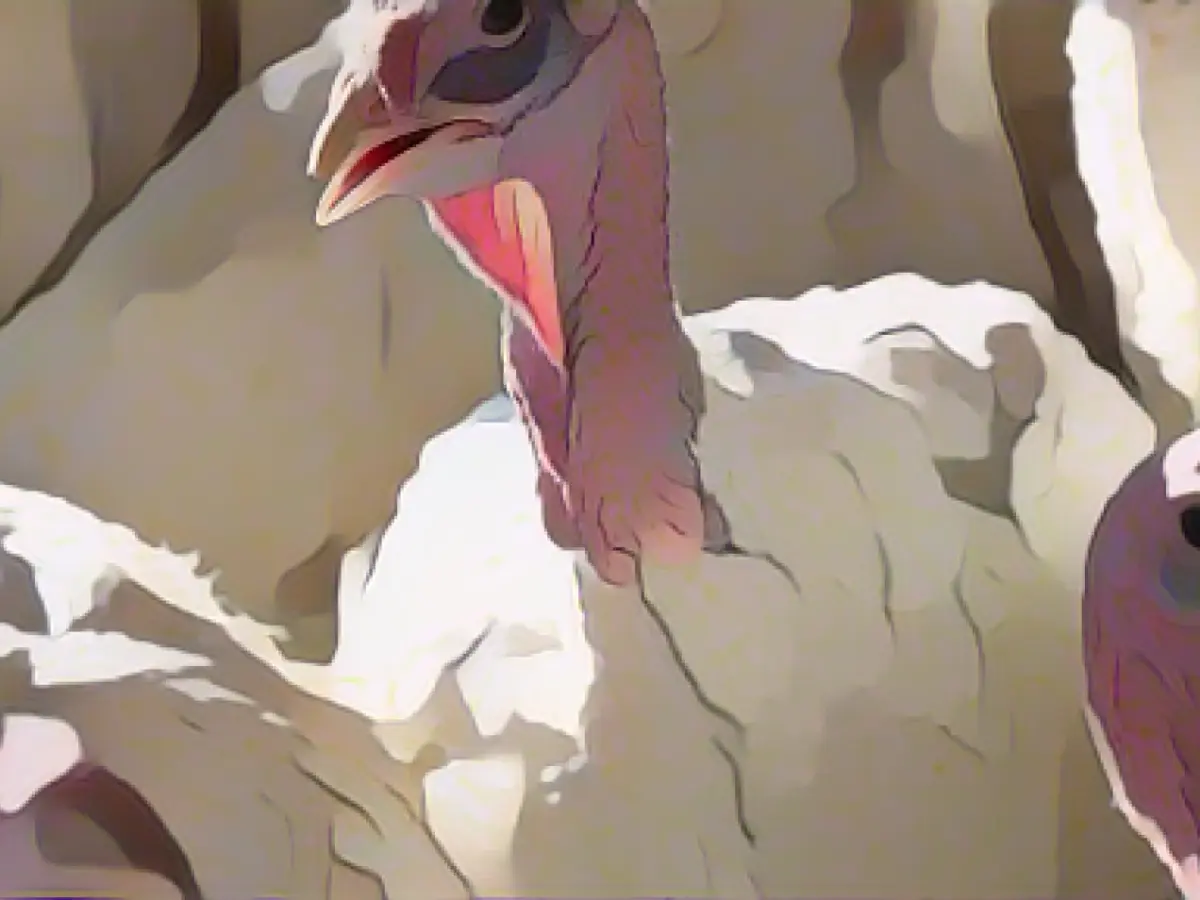Title: Persistent Rise in Avian Influenza Outbreaks in European Poultry Farms
In recent months, Germany and various European countries have witnessed a significant surge in avian influenza outbreaks on poultry farms. Timm Harder, the head of the National Reference Laboratory for Avian Influenza at the Friedrich Loeffler Institute (FLI) near Greifswald, reported over a dozen instances in Germany alone since October. On a broader scale, this problem transcends European borders, as Harder mentioned.
Specifically in Germany, November proved to be a challenging month for the poultry industry. Around 25,000 turkeys had to be culled in Mecklenburg-Western Pomerania, and another 24,000 were destroyed in Lower Saxony due to infections on their respective farms. According to the FLI's latest report, over 1.6 million farmed birds were affected in Europe during November alone, with Hungary being particularly hard-hit.
Harder attributes these outbreaks to several factors, including seasonality and the emergence of new genotypes of the virus. Seasonal fluctuations contribute to the frequency of these outbreaks, and the arrival of migratory birds plays a significant role in the spread. In addition, new genotypes, such as the four recently identified in Germany, could potentially aid the virus's transmission.
The relentless nature of avian influenza has established it as a constant threat, with increases in outbreaks occurring not only during the cold season but extending into summer and remaining prevalent throughout the year, both in Germany and worldwide. Experts voice concerns regarding Antarctica's role in propagating the virus, emphasizing its proximity to affected poultry populations.
Fortunately, at present, the risk to human health from the globally rampant virus group is considered minimal. Harder reported no new cases and attributed the low risk to the existence of a regional variant of the virus.
Related Articles
[1] Friedrich-Loeffler-Institut (2022). Nationales Referenzzentrum für Avian Influenza (NReVAI).
[2] Bundesministerium für Ernährung und Landwirtschaft (2022). Avian influenza.
[3] Sturm, P. et al. (2020). High prevalence and genetic diversity of Avian Influenza H5N8 viruses in wild birds in European Russia, 2017-2019.
[4] European Union Reference Laboratory for Avian Influenza (2022). EU Reference Laboratory for Avian Influenza.
[5] Friedrich-Loeffler-Institut (2021). Auswertung der Meldungen avian influenza in Deutschland.








